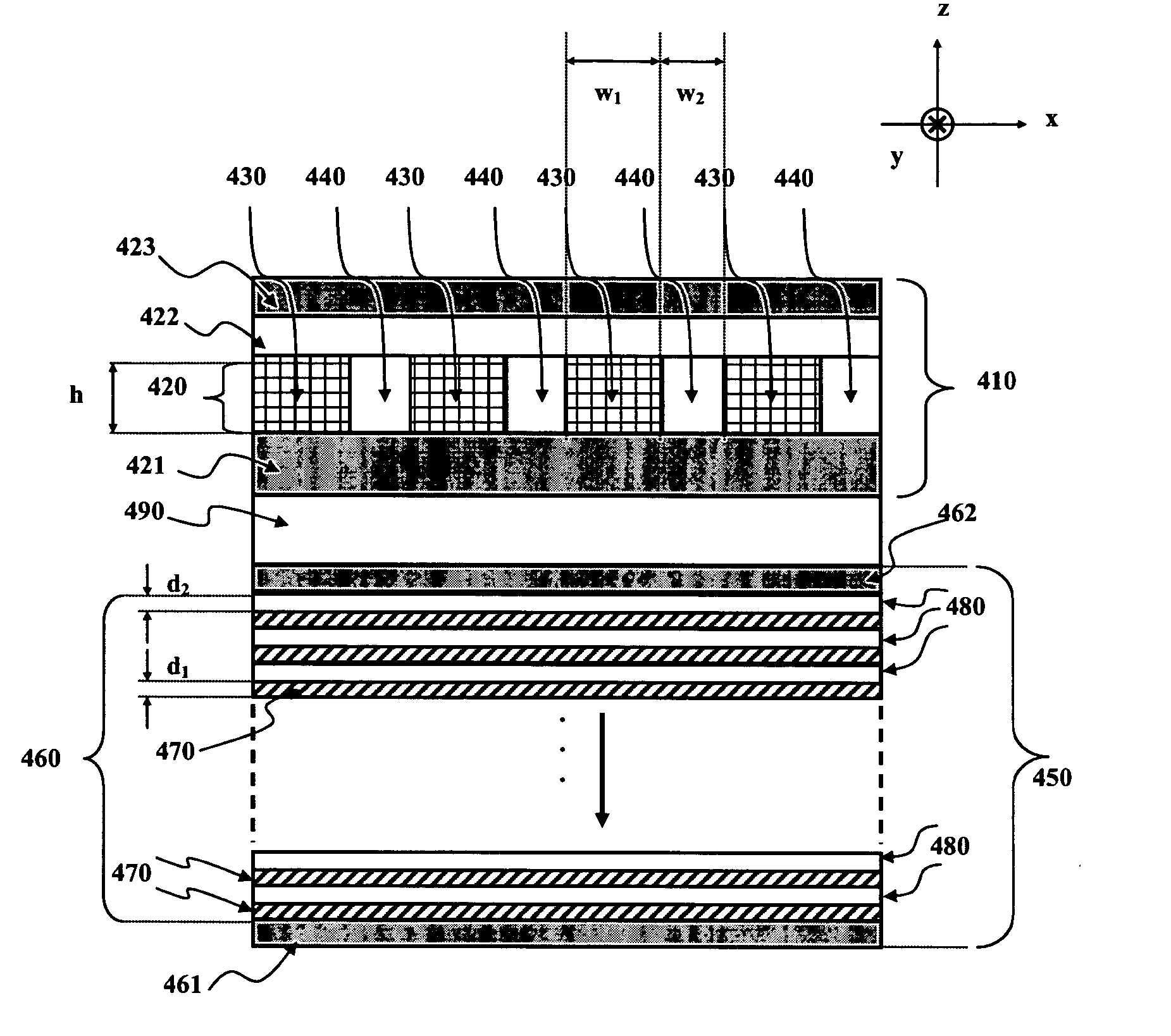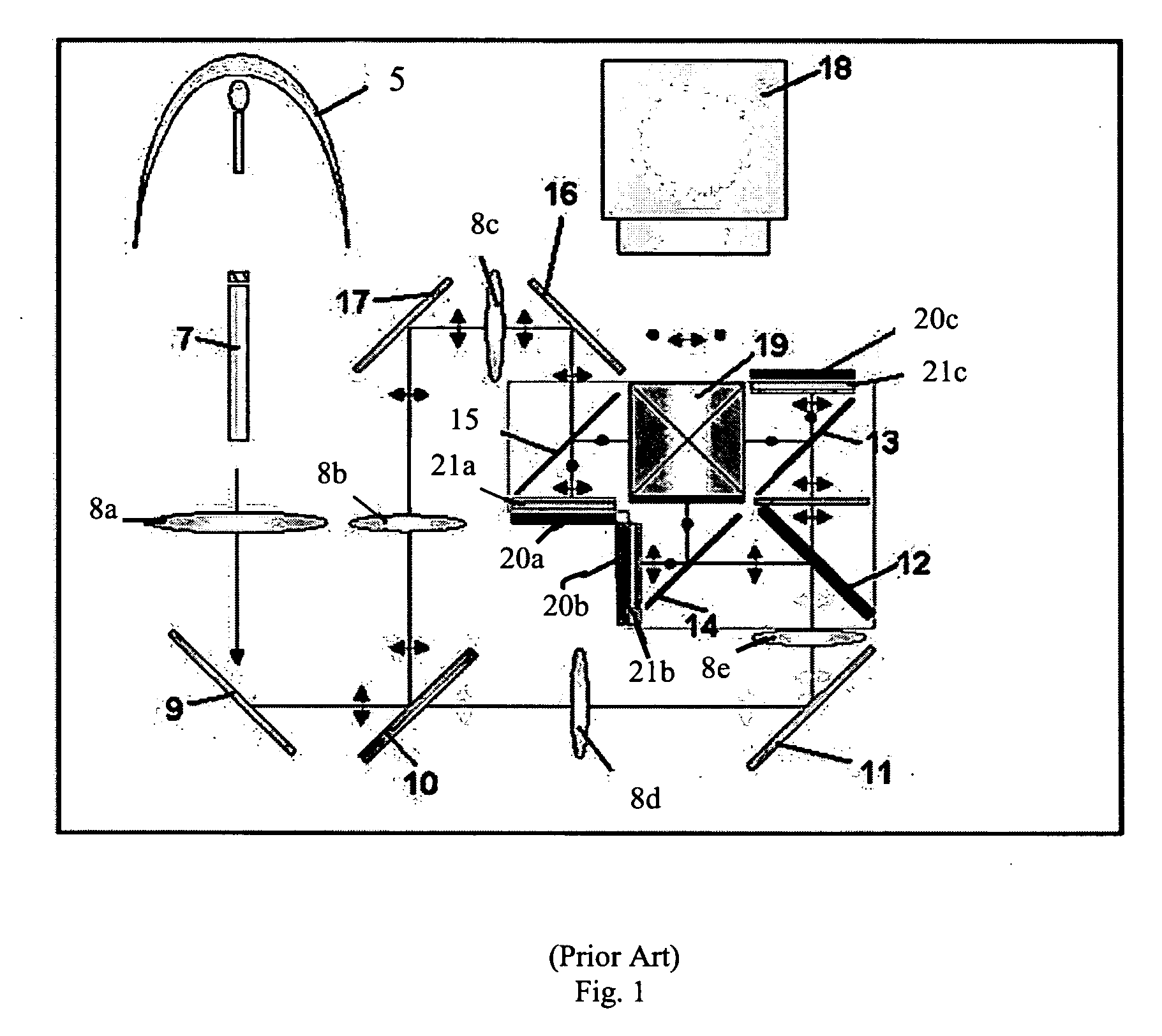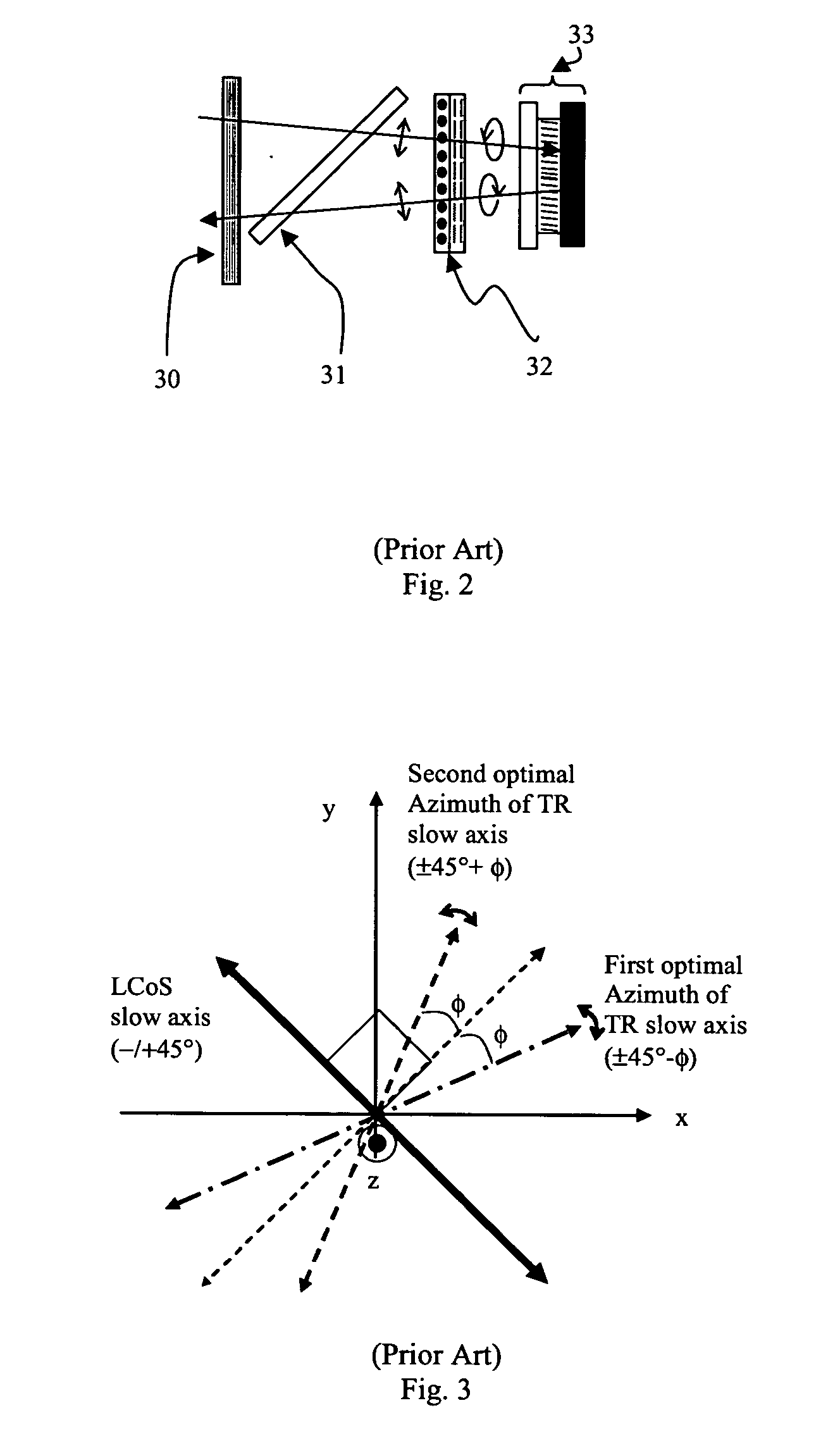Grating trim retarders
a technology of grating and retarders, applied in optics, color television details, instruments, etc., can solve the problems of unsuitable projection contrast compensation devices, devices that are too reflective to be used as trim retarders, and devices that are particularly unsuitable for projection contrast compensation, etc., to achieve the effect of improving image contrast in polarization-based
- Summary
- Abstract
- Description
- Claims
- Application Information
AI Technical Summary
Benefits of technology
Problems solved by technology
Method used
Image
Examples
Embodiment Construction
[0136] Referring to FIG. 11, there is shown a full function A / −C-plate grating trim retarder in accordance with one embodiment of the instant invention. The full function A / −C-plate grating trim retarder 400 includes a transversely-inhomogeneous A-plate grating element 410 and an axially-inhomogeneous −C-plate grating element 450, each coupled (incoherently) to opposite surfaces of a transparent substrate 490. More specifically the transversely-inhomogeneous A-plate grating element 410, which is a grating anti-reflection (AR) element, is mounted on a first surface of a transparent substrate 490, while the axially-inhomogeneous −C-plate grating element 450, which is a form-birefringence anti-reflection (FBAR) element, is mounted on a second surface of the transparent substrate 490.
[0137] The A-plate grating AR element 410 includes a transverse grating 420, an optional etch-stop stack 421 (e.g., including one or more etch-stop layers), an optional cap-stack 422 (e.g., including one o...
PUM
| Property | Measurement | Unit |
|---|---|---|
| wavelength range | aaaaa | aaaaa |
| wavelength range | aaaaa | aaaaa |
| wavelength range | aaaaa | aaaaa |
Abstract
Description
Claims
Application Information
 Login to View More
Login to View More - R&D
- Intellectual Property
- Life Sciences
- Materials
- Tech Scout
- Unparalleled Data Quality
- Higher Quality Content
- 60% Fewer Hallucinations
Browse by: Latest US Patents, China's latest patents, Technical Efficacy Thesaurus, Application Domain, Technology Topic, Popular Technical Reports.
© 2025 PatSnap. All rights reserved.Legal|Privacy policy|Modern Slavery Act Transparency Statement|Sitemap|About US| Contact US: help@patsnap.com



